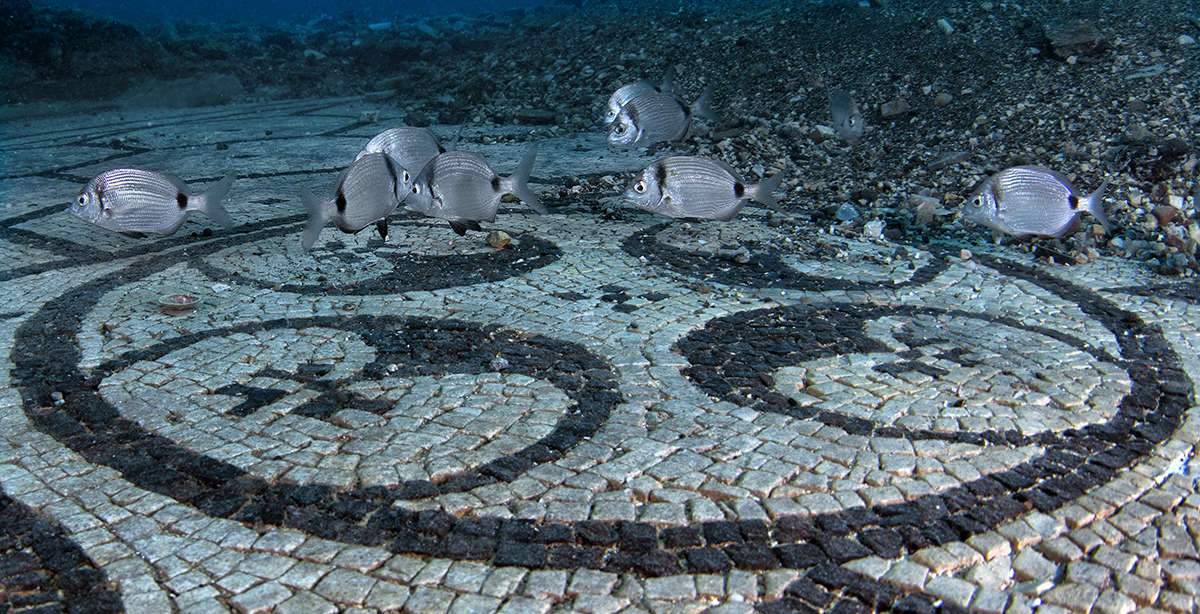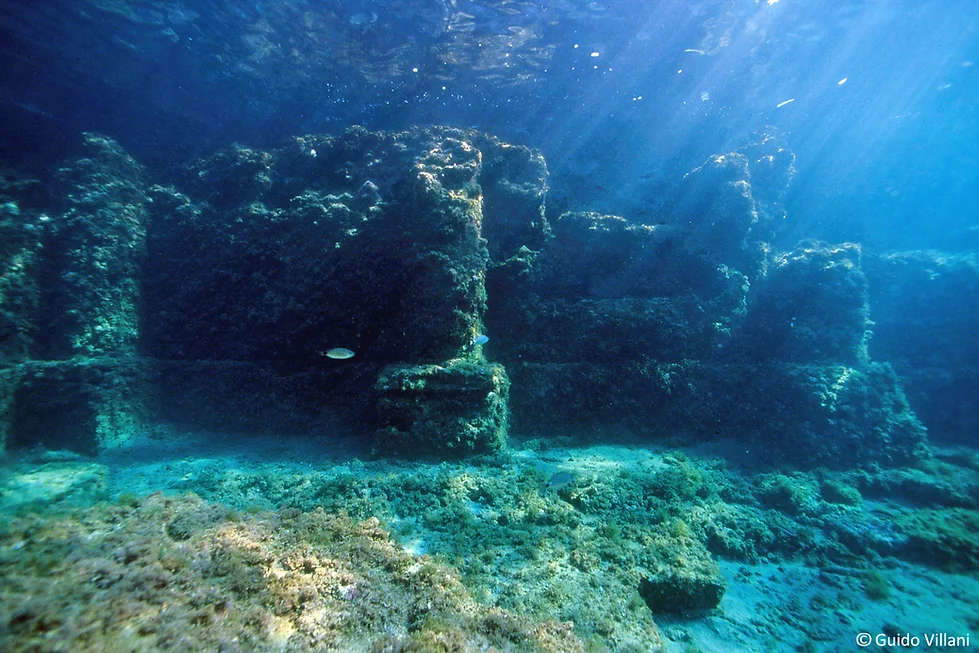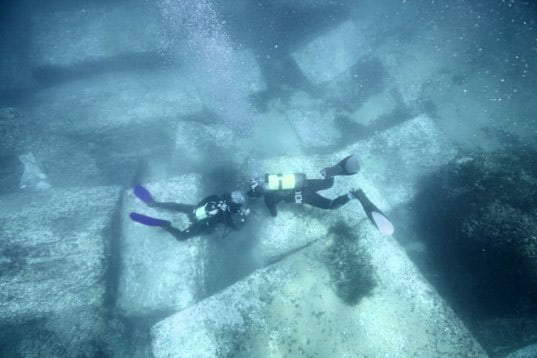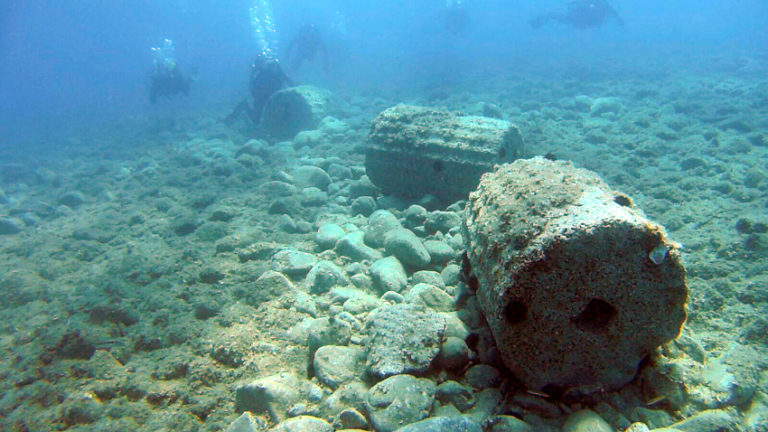The regions of Campania, Puglia and Calabria are rich in history and beauty: these lands that were once ancient kingdoms have been submerged by the waters, ports have suffered decline, while once-vital routes have been transformed into scenery evoking a surreal atmosphere, to be discovered through underwater archaeological parks. Therefore, it is imperative to protect and enhance Italy’s rich underwater archaeological heritage, guarded as an authentic treasure within real underwater museums. The Musas project, the network of Underwater Archaeology Museums promoted by the Ministry of Culture and financed by the European Regional Development Fund 2014-2020, was born with this objective. This initiative involves the regions of Campania, Puglia and Calabria.
One of the most intriguing aspects of underwater archaeology is the possibility of discovering and studying unique historical contexts that have remained preserved under water, providing an extraordinary opportunity to understand human history and culture related to coastal areas. Visitors have the opportunity to explore these sites through scuba diving or snorkeling, allowing them to venture into an underwater world rich in history and culture. These sites allow the public to make direct contact with submerged archaeological relics and ancient structures. Visiting our ancient underwater ruins is like visiting an alternative museum, and immersing yourself in a fascinating and alien environment, where marine life and historical remains come together in an experience that is totally different from a land-based exhibition space. So here is a list of the five underwater archaeological sites and parks that offer an extraordinary opportunity to understand our history through underwater archaeology:
The Submerged Park of Baia represents an archaeological treasure of extraordinary value, preserved on the seabed in the marine protected area located on the coast of the metropolitan city of Naples north of the Gulf of Naples. The sea, which contributed to the splendor of the Phlegraean Fields, mixes with archaeology, revealing mosaics under thin layers of sand and animating the remains of walls and statues with marine life. What has been submerged by the sea is a vast portion of ancient coastline, to be imagined in connection with the land structures of the Archaeological Park of the Baths, overlooking an inlet known in the past as Baianus lacus, reached by an artificial canal. As early as Republican times, this inlet was home to maritime villas. Among the most notable submerged buildings is the Nymphaeum of the Claudia era, located at a sea depth of 7 meters in front of Punta Epitaffio, East of the nymphaeum is a villa presumably belonging to the Pisoni family, recognized by seals on a lead water pipe. Numerous other villas and baths occupied the area surrounding the now-submerged lacus, including the villa known for its renowned mosaic floors, one of the most popular attractions for divers and snorkelers.

The scenic shoreline of Posillipo, Naples, continues to fascinate visitors, as it has always done with the people who have inhabited this area over the centuries. Thanks to its natural beauty and proximity to the commercial ports of Baia and the military port of Miseno, this coast has been populated since the first century B.C., as evidenced by the numerous Roman remains visible both on land and under the sea in the Gaiola Underwater Park. The very name of the hill derives from the Pausilypon villa d’otium, built by Publius Vedio Pollione in the 1st century BC, which later became part of the imperial possessions under Octavian Augustus. On the seabed, just a few meters below the surface, remains of landing stages, nymphaea, walkways and fish-farming tanks, used by the Roman aristocracy between the 2nd century BC and the 1st century AD, can be seen. These tanks, infamous for the anecdote reported by Seneca and Pliny, tell of how Pollion was in the habit of feeding distracted slaves to moray eels. Instead, along the coast, toward the village of Marechiaro, the remains of a seaside villa known as the House of the Spirits emerge. To the distracted eye it appears as a building eroded by the passage of time and the action of the sea. In reality, the Villa of the Spirits, which continues to emerge from the water is a valuable cultural heritage that fascinates fishermen and frequenters of the surrounding beaches.

At Punta delle Castella, located in the hamlet of Isola di Capo Rizzuto in the province of Crotone, there is an underwater archaeological trail that extends south of the Aragonese castle. The trail, located about 200 meters from the coast and at a depth of 5 meters, offers fifteen points of interest, including remains of a staircase, two warehouses and various quarry workings. In the bay of Scyphus lies a wreck of an ancient trading ship that sank in the first half of the 3rd century AD carrying a cargo of marbles from Asia Minor. This cargo, still intact and consisting of 54 rough artifacts, represents significant evidence of trans-Marine transportation of marble during the imperial age. The wreck, discovered in 1986 by Croton diver Luigi Cantafora, belongs to the category of naves lapidariae, sturdy Roman vessels. Two routes have been created to allow visits to the underwater archaeological site: one for scuba divers and the other for freedivers or snorkelers.

In the territory of the municipality of Monasterace Marina, along the lower Ionian coast in the province of Reggio Calabria, is the archaeologicalarea of ancient Kaulon or Kaulonia. It includes the archaeological park and a submerged area in the sea in front of it, where it is possible to explore the underwater archaeological site of Kaulon. Recent underwater research, aided by coastal erosion caused by bradyseism, has unearthed the submerged site, which features architectural elements such as ornate column ruins from Doric-style temples. This area, currently located between 7.5 and 5 meters deep, has numerous worked and half-finished architectural elements, including fluted Ionic columns, blocks of various sizes, and mooring bollards. This important underwater deposit, with more than 200 artifacts, may have been a processing area or a temple under construction that was not completed for reasons that remain unclear. The columns, dated between 480 and 470 B.C. through stylistic comparisons, add another historical and artistic dimension to this fascinating archaeological site.

The ancient Messapian and later Roman city of Egnatia is located just north of the small town of Savelletri, near Fasano, exactly on the border between ancient Peucezia and Messapia, present-day Salento. It is one of the most fascinating archaeological sites in Apulia because of its extent and the historical contexts it has revealed. The pre-Roman city is closely associated with the Messapian culture, as evidenced by its important ceramic class dated to the 4th-3rd centuries BC. Along a rugged coastline, near the modern marina of Savelletri, are the submerged remains of the ancient port of Egnatia, now at a maximum depth of 6 meters. The port was part of the Roman city crossed by the Via Traiana, built on a pre-existing settlement on the border between Messapia and Peucezia. The submerged structures include two long concrete piers, built according to the principles described by Vitruvius and found at other Mediterranean maritime sites. The large pilae put in place with formworks are an attraction both for scholars who wish to learn more about these facilities and for underwater visitors and tourists who can explore the site with guided dives.

 |
| Five underwater archaeological parks to discover in Italy |
Warning: the translation into English of the original Italian article was created using automatic tools. We undertake to review all articles, but we do not guarantee the total absence of inaccuracies in the translation due to the program. You can find the original by clicking on the ITA button. If you find any mistake,please contact us.